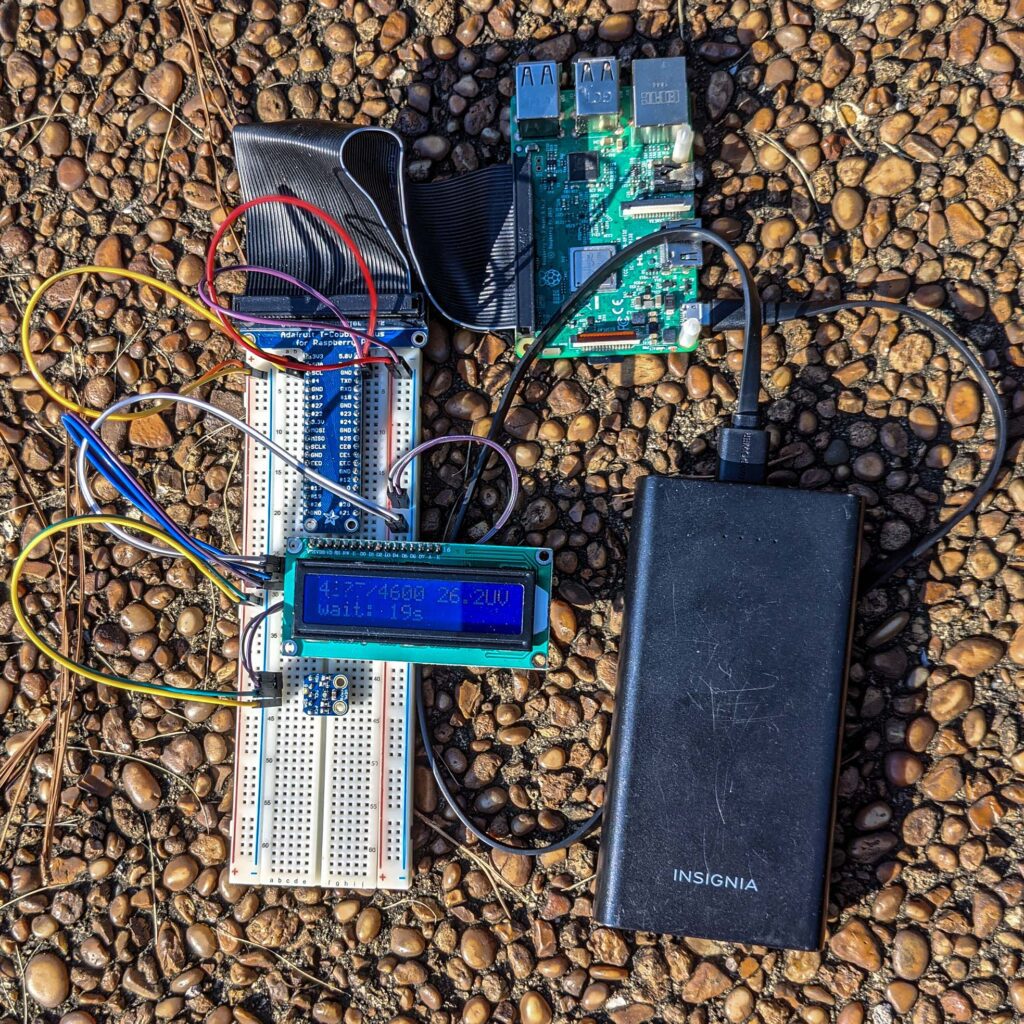UV Light Meter
September 24th 2021
Sarah & I have been experimenting with Cyanotypes lately. We picked up a Photographer’s Formulary Cyanotype Kit. We also got a pretty large contact printing frame. I had built a really basic exposure unit a while back with some UV LED tape.
We figured out with test strips that to get a rich dark blue we needed an exposure time of about 75 minutes. 75 minutes is kind of a long time though, so we wanted to try using the sun, but of course, the sun’s output is pretty variable — clouds might block the sun for a while and summer vs. winter has pretty significant output changes.
I had the idea that you could use a sensor to measure the UV light and count up how much UV had hit the cyanotype and have consistent exposures no matter how much the sun’s output changes.
I picked up a UV light sensor, a little two row display, and connected them up over I2C to a Raspberry Pi I had sitting around.

A bit of Python and I had a prototype. Briefly, the sensor takes one reading per second, adds that value to a running tally, and sees how many more seconds it will take to hit the desired exposure.
Interestingly, the hardest part here was figuring out how to time one second. If you have a basic loop that works like this:
Loop:
Get start time
Measure Light Intensity
Sleep until it’s one second later than the start time
You’ll discover there’s overhead on making the loop happen, getting the start time, and even on the sleep. So my loops were actually taking longer than a second. (It seems like the right way to do this is with Timer Interrupts? In the the second version of this prototype, I’m going to look into that.)
So, to get my seconds closer to one second, every time the meter is used, it saves the average time a loop took, and reduces the loop time proportionally so the actual loop time is closer to 1 second. Based on some testing I think the timing is now accurate to 0.0001± second.
In any case, the light meter seems to work pretty well, though if the sun is at a particularly low angle, the timing seems to be off. I need to experiment more.